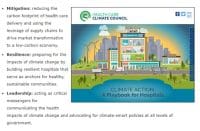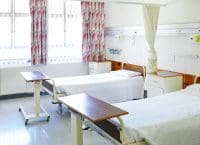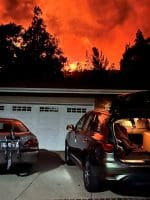With more people living longer and to a higher standard, the resources of planet Earth are being stretched thin. Environmental engineers refer to this condition as “exceeding planetary boundaries.” Nine different boundaries contribute to our understanding of the health of the planet. On one hand, these boundaries include highly politicized concerns such as climate change. And on the other hand, these boundaries include important, but perhaps less well known concerns such as the loss of biodiversity, the overuse of fertilizers, and the lack of sources of cleaning drinking water.
Just as nurses use the Nursing Process – assessment, diagnosis, outcomes/planning, implementation, and evaluation – to deliver holistic, patient-focused care, the “Environmental Process” uses a similar approach to care for the planet. But there are significant differences. For example, whereas the Nursing Process must consider psychological, sociocultural, spiritual, economic, and life-style factors alongside physiological data, planetary boundaries are focused almost exclusively on the equivalent of physiological data. In particular, the attitudes and behaviors of people towards nature often are missing from the work of environmental engineers. Furthermore, environmental engineers work at the scale of populations to protect the health, safety, and welfare of the public; whereas nurses’ patients may be individuals, families, populations, or communities.
Nurses are researching if the financial, technological, and cultural systems of Western society are fundamentally at odds with the goals of human flourishing in the broadest sense of physical, mental, and spiritual wellbeing. The two questions that nurses are asking, include: 1) how do both humanity and the planet continue to thrive while living beyond planetary boundaries; and 2) how are the benefits and harms of thriving shared? Nurses are probing if the Anthropocene – the current geological epoch where humans are one of the dominant forces for change on the planet – is a “new normal”. Ultimately, nursing research will require scalable interventions to provide care to everyone, at all times, from the bedside to the global community of nations. And that care will need to include much more than universal primary care. The care that is needed must address these two fundamental questions being asked by nurses.
One way that nurses may scale-up care to meet the global challenge of the Anthropocene is to join with adjacent professions, such as those represented by the acronym STEM, which stands for science, technology, engineering, and mathematics. While nursing shares many of the characteristics of existing STEM professions, a major benefit of integrating nursing into STEM is the promotion of STEMpathy, or empathetic caring to improve human-centered design among other benefits.
The Nursing is Stem Coalition was founded last year to promote nursing as a STEM profession.
Another way that nurses may scale-up care is through convergence to form V-shaped professionals. Convergence is defined as transdisciplinary collaboration to solve vexing challenges. The V-shaped profession is an approach of convergence where two disciplines operating in parallel in the present, join forces to achieve a shared vision of the future. Without blurring the disciplinary distinctions of nursing or environmental engineering, the nurse+engineer is an example of a V-shaped professional.
Whether nursing is recognized as a STEM profession, the V-shaped profession of the nurse+engineer is successful, or both of these plus other beneficial outcomes occur, it is important that caring professionals such as nurses and environmental engineers call attention to the challenge of the Anthropocene and find ways to scale-up caring, local to global from the bedside to the community.
Daniel B. Oerther, PhD PE, BCEE, FAAN(h) is a professor at Missouri University of Science and Technology in Rolla, Missouri.
References
Dillard-Wright J, Walsh JH, Brown BB. We Have Never Been Nurses: Nursing in the Anthropocene, Undoing the Capitalocene. ANS Adv Nurs Sci. 2020;32(2):1320146. doi: 10.1097/ANS.0000000000000313
Landsman K, Giuliano K. Nurse-Engineer Partnerships in Academia. AJN. 2023;123(3):44-46. doi: 10.1097/01.NAJ.0000921804.30167.c7
Oerther DB. Nursing should be a STEM discipline! February 12, 2018. https://nursingcentered.sigmanursing.org/stories/view/nursing-should-be-a-stem-discipline
Oerther DB, Glasgow MES. The Nurse+Engineer as the Prototype V-Shaped Professional. Nurs Outlook. 2022;72(2):280-291. doi: j.outlook.2021.10.007
Oerther DB, Oerther S. From InterProfessional to Convergence: Nurses Educating V-Shaped Professionals. Nurs Educ Pract. 2021;53:103047. doi: 10.1016/j.nepr.2021.103047
Oerther DB, Oerther S, McCauley L. Environmental Engineering 3.0: Faced with Planetary Problems, Solutions Must Scale-up Caring. J Environ Eng. 2024;forthcoming. doi: 10.1061/JOEEDU/EEENG-7764
Oerther DB, Yoder-Wise P, Malone B. Identifying Opportunities for Educators to Pursue Collaboration at the Interface of Nursing and Engineering – and a Word of Caution. J Adv Nurs. 2020;76(4):920-923. doi: 10.1111/jan.14291


















